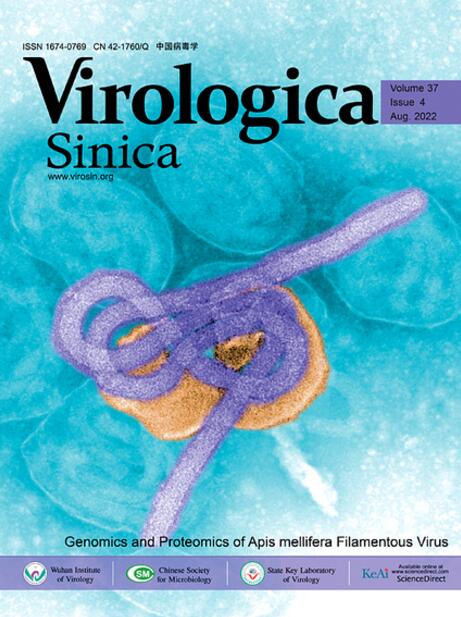冠状病毒跨物种感染的认识:猪流行性腹泻病毒在啮齿动物中的感染。
IF 4
3区 医学
Q1 Medicine
引用次数: 0
摘要
自2003年以来,冠状病毒的跨物种感染导致了几次重大流行病。因此,探索冠状病毒的宿主范围及其在不同宿主中的特征具有重要意义。本研究在养猪场采集的大鼠粪便样本中检测到猪流行性腹泻病毒(PEDV),猪是唯一的天然宿主。进一步的动物试验表明PEDV可在新生小鼠和大鼠中引起全身感染。在啮齿类动物中,脑、肺、肠和脾脏都是PEDV的靶点,而在猪中,肠道则是靶点。发病率和死亡率因感染途径不同而不同。感染后的粪便中也检出PEDV,提示感染的啮齿动物是潜在的传染源。此外,PEDV在仔猪中证实了脑性倾向,这是以前没有发现的。综上所述,我们的研究结果表明PEDV可以通过不同的途径跨越物种屏障感染小鼠和大鼠。尽管PEDV对仔猪具有高度破坏性,但它会改变目标器官,并在遇到新宿主时变得温和。因此,应重视PEDV的跨种感染,避免再次发生人畜共患病。本文章由计算机程序翻译,如有差异,请以英文原文为准。
Insights into cross-species infection: Porcine epidemic diarrhea virus infections in the rodent
The cross-species infection of coronaviruses has resulted in several major epidemics since 2003. Porcine epidemic diarrhea virus (PEDV) is a devastating swine enteric coronavirus, which targets pigs as the only natural reservoir. In this study, the nucleic acid of PEDV was detected in rat fecal samples collected from pig farms. Further animal tests showed that PEDV can cause systemic infections in neonatal mice and rats via intracranial inoculation. The brain, lung, intestine and spleen were all targets for PEDV in rodents in contrast to the intestine being targeted in pigs. Morbidity and mortality vary via different infection routes. PEDV was also detectable in feces after infection, suggesting that the infected rodents were potential infectious sources. Moreover, the cerebral tropism of PEDV was verified in piglets via orally inoculation, which had not been identified before. In conclusion, our findings demonstrate that PEDV could cross the species barrier to infect mice and rats through different routes in experimental settings. Although it is highly devastating to piglets, PEDV changes the target organs and turns to be milder when meeting with new hosts. Based on these findings, more attention should be paid to the potential cross-species infection of PEDV.
求助全文
通过发布文献求助,成功后即可免费获取论文全文。
去求助
来源期刊

Virologica Sinica
Biochemistry, Genetics and Molecular Biology-Molecular Medicine
CiteScore
7.70
自引率
1.80%
发文量
3149
期刊介绍:
Virologica Sinica is an international journal which aims at presenting the cutting-edge research on viruses all over the world. The journal publishes peer-reviewed original research articles, reviews, and letters to the editor, to encompass the latest developments in all branches of virology, including research on animal, plant and microbe viruses. The journal welcomes articles on virus discovery and characterization, viral epidemiology, viral pathogenesis, virus-host interaction, vaccine development, antiviral agents and therapies, and virus related bio-techniques. Virologica Sinica, the official journal of Chinese Society for Microbiology, will serve as a platform for the communication and exchange of academic information and ideas in an international context.
Electronic ISSN: 1995-820X; Print ISSN: 1674-0769
 求助内容:
求助内容: 应助结果提醒方式:
应助结果提醒方式:


